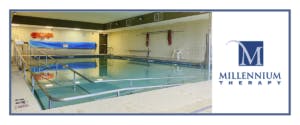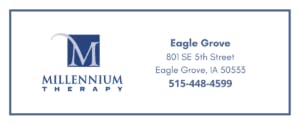Low Back Pain: A growing concern
Back pain is a huge problem- it has or will affect most of us. The current estimate is that 80% of people will experience back pain at least once. It is the single biggest cause for disability, the third most common reason for doctor visits, and one of the most common reasons for missing work.
It’s also expensive. Back and neck pain make up the biggest healthcare expense in the US, totaling $134 billion spent in 2016. The next two most expensive conditions were diabetes- $111 billion in spending- and ischemic heart disease at $89 billion. Diabetes and heart disease being so expensive to treat doesn’t surprise most folks- they can both lead to other major problems, require long term medication, could require surgery, and can be fatal. Back pain won’t kill you, doesn’t require long term medication, and usually doesn’t require surgery.
So, why is treating back pain so expensive?
The first reason is that back pain is so common. The second reason is that our current system isn’t very good at following clinical practice guidelines. Current recommendations include starting with activity modification, and active treatments like physical therapy. Research backs this up, showing better outcomes and lower costs with early PT.
If you find yourself with low back pain, it is important to understand that there is an outstanding chance that you will recover from your low back pain in the near future. The good news: 60% of of people with back pain will recover within 1-3 weeks, and 95% will recover within 12 weeks using early PT.
Unfortunately, only 2% of people with back pain start with PT, and only 7% get to a PT within 90 days. At the same time, a study looking at about 2.5 million people with back pain in JAMA showed that 32.3% of these patients received imaging within 30 days of diagnosis, and 35.3% received imaging without a trial of physical therapy. Both of these things go against current practice guidelines for treatment of back pain, and drives up healthcare costs for the patient.
Aligning Low Back Pain Treatment to Practice Guidelines
The right treatment for you should include treatments proven to help recovery. However, traditional insurance plan benefit designs don’t incentivize the use of non-invasive care options. Also, many care providers generate revenue from back pain treatments like injections and imaging, driving up costs, extending recovery time, and reducing use of recommended therapies like PT.
Insurance plans are taking notice, and major insurance carriers are addressing the barriers to care that keep patients from receiving the physical therapy they need to get better. United Healthcare (the largest insurer in the US) and TRICARE (the insurance system used through the US Military) are waiving the payment owed by the patient for up to three PT sessions in an attempt to improve the use of what the Defense Health Agency calls “high value” treatment for low back pain. The theory is that once a person understands the benefits from PT treatment, they’re likely to go back for more.
Does this mean that you could eventually get physical therapy for free? Maybe! The fact that such a major insurers are looking into the value of PT for back pain is great news for everyone. This could improve the lives of millions of people every year while reducing the huge cost of treating low back pain for the country. This seems like a win for everyone involved!
Back Pain Treatment at Millennium Therapy
Physical Therapists at Millennium Therapy offer personalized treatment plans to patients suffering from back or neck pain. Our therapists use specialized techniques such as myofascial release, ASTYM, ultrasound, gentle hands-on techniques to relax muscles, and dynamic or static pelvic traction. Your Millennium therapist will take the time to ensure you really understand the techniques being used, and the source of your pain or discomfort.
Jill Kuyava, PT in Hudson, IA, knows many patients have tried physical therapy before, but are surprised at the difference when coming to see her, “I’ve had patients who have been to 3 or 4 other physical therapy clinics before and never had a therapist touch them.” Specializing in manual therapies and PRI methodologies, working with Jill was a much better experience for her patients, “the patients think it’s quite refreshing to really be able to understand the techniques being used.” For back pain patients, Jill focuses on education, and manual techniques that get the patient better faster.
Your Millennium Therapy PT can help give you the tools treat your dysfunctions and get back to life. Appointments are available in clinic, via telehealth, or by home visit. To schedule an appointment, call your nearest clinic, or complete the form below to be put in touch with a PT in your area. 











